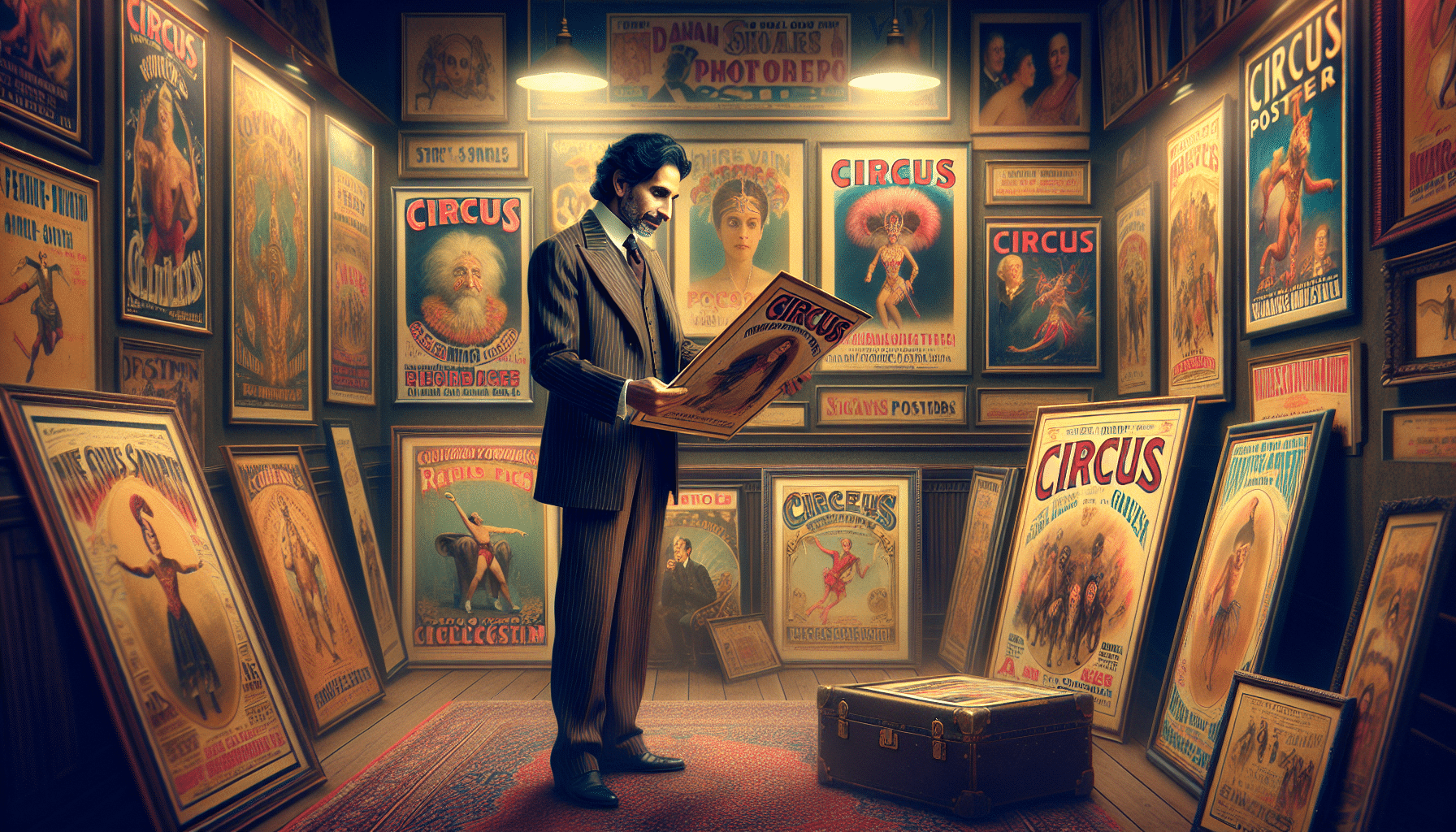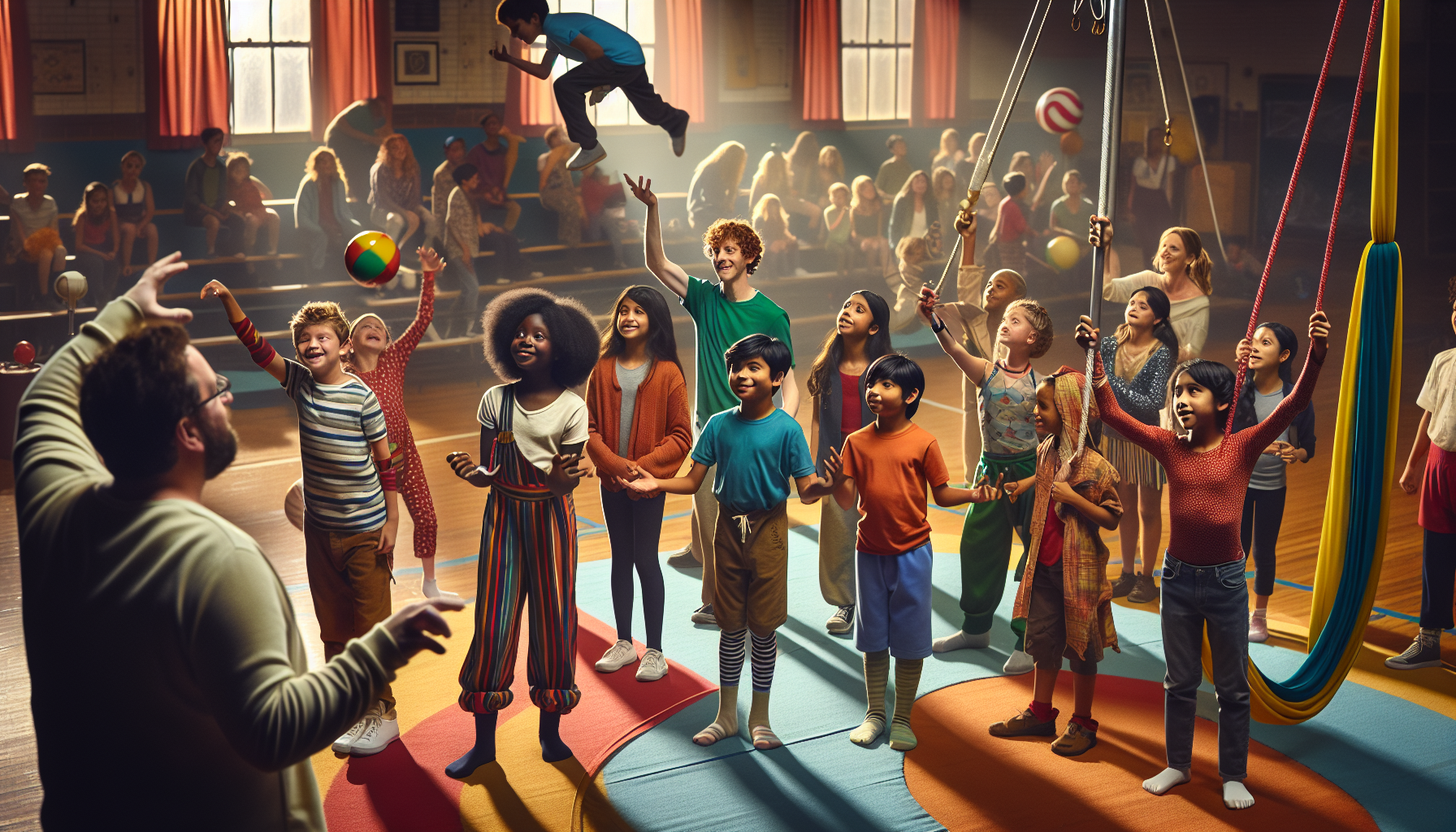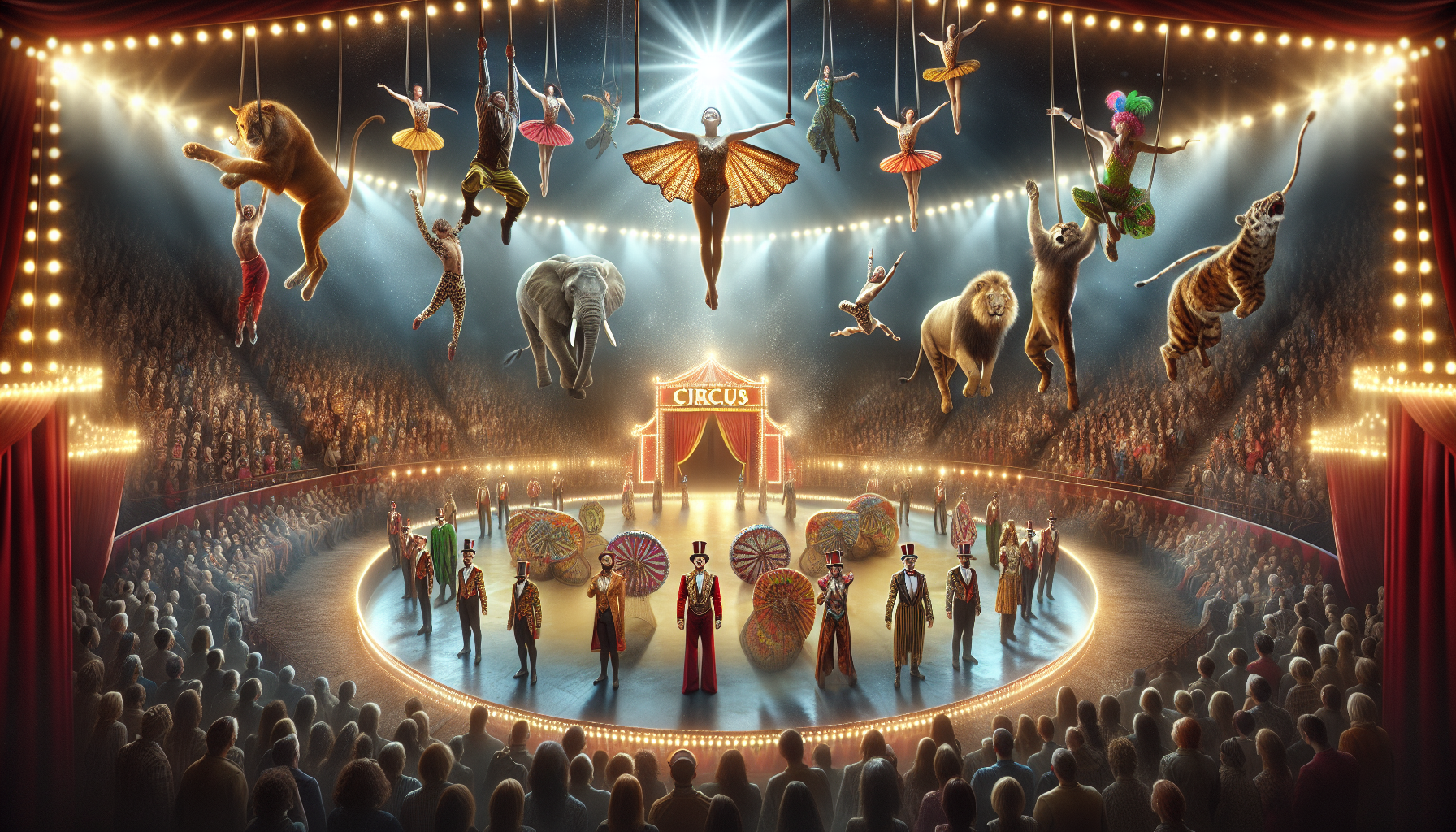In a world where digital screens often monopolize our attention, there exists a vibrant and enchanting subculture that harkens back to a time when the allure of the big top captivated audiences around the globe. This is the fascinating realm of circus poster collectors, a passionate community dedicated to preserving and celebrating the dazzling artistry and rich history encapsulated in these ephemeral pieces of paper. Step right up and discover how these collectors have emerged from the shadows to bask in the spotlight, as the world rediscovers the magic of the circus through their collections. 🎪
The circus has always been a symbol of wonder and escapism, a place where the extraordinary becomes reality, and the impossible seems within reach. From the death-defying stunts of trapeze artists to the mesmerizing performances of animal tamers, the circus offers a unique blend of thrills and enchantment. But beyond the awe-inspiring acts themselves, there exists an equally captivating art form that has been instrumental in drawing audiences to the spectacle: the circus poster. These vibrant, eye-catching pieces of promotional art have not only enticed generations to the circus tent but have also become prized collectibles for those who cherish the nostalgia and artistry they embody.
In this article, we will delve into the captivating world of circus poster collecting, exploring the rich history and evolution of these artworks and how they have come to be revered as cultural treasures. We’ll journey through time, from the golden age of the circus in the late 19th and early 20th centuries, when posters were a primary means of advertising, to the modern era, where collectors fervently seek out these artifacts, driven by both a love for the circus and an appreciation for graphic design and history. Along the way, we’ll uncover the stories behind some of the most iconic and sought-after posters, examining how they reflect the changing tastes and social dynamics of their times.
Moreover, we’ll meet the collectors themselves, a diverse and passionate group of individuals whose dedication to preserving circus history is as vibrant as the posters they collect. Through their eyes, we gain insight into what fuels their passion and the lengths they go to acquire these cherished pieces. From attending auctions and scouring flea markets to connecting with fellow enthusiasts online, these collectors form a tight-knit community bound by their shared love for the circus. We’ll also explore how the digital age has transformed the world of collecting, offering new opportunities and challenges for those who seek to preserve these vintage gems.
Finally, we’ll consider the broader cultural significance of circus posters and their collectors. In an era where nostalgia often intersects with a yearning for authenticity, the resurgence of interest in circus posters speaks to a larger trend of valuing the tangible and the tactile in a digital world. We’ll reflect on how this passion for collecting not only keeps the spirit of the circus alive but also contributes to a deeper understanding of our shared cultural heritage. So, step right up and join us as we uncover the magic, mystery, and meticulous artistry behind the world of circus poster collectors—a world where history comes alive with every vibrant print. 🎟️
The Emergence of Circus Poster Collectors
The allure of the circus has captivated audiences for centuries, bringing together a kaleidoscope of talents, sounds, and sights that ignite the imagination. Yet, beyond the ring, a quieter, equally vibrant passion has grown among collectors worldwide: circus poster collecting. These colorful pieces of art not only serve as historical records of past performances but have also evolved into highly sought-after collectibles.
Circus posters first appeared in the 19th century as a primary form of advertisement. Bold and colorful, they were designed to capture the attention of passersby, showcasing the most exciting acts and performers. As the circus itself transformed and adapted to societal changes, so too did the style and design of these posters. Initially created to be ephemeral, they have since become valued pieces of art, preserved by collectors who recognize their historical significance and aesthetic value.
Collectors often find themselves drawn to these posters for various reasons. Some are captivated by the artistry and craftsmanship involved in their creation. Others are fascinated by the stories and history they represent. Each poster is a time capsule of a particular era, capturing the cultural, social, and technological contexts of its time. The demand for these posters has surged in recent years, fueled by both nostalgia and a growing appreciation for vintage artwork. The internet has played a crucial role in connecting enthusiasts from all over the world, providing a platform for buying, selling, and trading, as well as sharing knowledge and experiences.
The Art and Craft of Circus Posters
Circus posters are more than mere advertisements; they are intricate works of art that require a blend of creativity and technical skill. These posters are known for their vivid colors, bold typography, and dynamic compositions, each element carefully chosen to draw in potential spectators. The process of creating a circus poster traditionally involved lithography, a printing technique that allows for detailed and vibrant imagery.
Lithography was favored because it enabled artists to produce high-quality, multicolored prints efficiently. This method involves drawing an image onto a stone or metal plate with a greasy substance, then using water to keep the ink from sticking to the non-greased areas. This technique revolutionized poster production, allowing for mass distribution while maintaining artistic integrity. Over time, as printing technology advanced, screen printing and offset printing became more common, further enhancing the quality and accessibility of circus posters.
The subjects of these posters often included star performers, exotic animals, and fantastical scenes designed to spark curiosity and excitement. Many of these posters were created by renowned artists of the time, whose contributions to graphic design have been recognized in art history. The unique blend of art and advertising in circus posters has made them an essential study for those interested in both fields.
Notable Circus Poster Collections and Exhibitions
The world of circus poster collecting is rich with remarkable collections and exhibitions, each offering a unique glimpse into the history and evolution of the circus. Museums, private collectors, and enthusiasts have amassed extensive archives, some of which are regularly displayed to the public. These collections not only showcase the diversity of circus posters but also provide insight into the cultural and historical context of the circus as an entertainment form.
One such collection is housed at the Circus World Museum in Baraboo, Wisconsin. This museum features an impressive array of circus posters, documenting the evolution of the circus from the late 19th century to the present day. The collection includes posters from famous circuses like Ringling Bros. and Barnum & Bailey, as well as smaller, lesser-known troupes. These posters are meticulously preserved and displayed, offering visitors a chance to experience the vibrant history of the circus.
Private collectors also play a significant role in preserving circus history. These individuals often seek out rare and unique pieces, participating in auctions and trade shows to expand their collections. Some private collections have gained recognition for their size and scope, becoming valuable resources for researchers and historians. The passion and dedication of these collectors ensure that the legacy of the circus and its posters continue to be celebrated and studied.
The Market for Circus Posters
The market for circus posters has evolved considerably over the years, with interest and prices steadily increasing. Collectors, art enthusiasts, and investors are drawn to these posters for various reasons, from their historical significance to their aesthetic appeal. The rarity and condition of a poster can significantly influence its value, making it important for collectors to understand the nuances of the market.
Several factors contribute to the value of a circus poster. The age of the poster is often a primary consideration, with older posters generally being more valuable due to their rarity. The condition of the poster is also crucial; posters that are well-preserved, with vibrant colors and minimal damage, are more desirable to collectors. The artist or designer of the poster can also impact its value, with works by well-known artists often fetching higher prices.
The internet has made the circus poster market more accessible, with online auctions and marketplaces connecting buyers and sellers worldwide. Websites dedicated to vintage posters provide valuable resources for those looking to buy or sell, offering insights into market trends and pricing. These platforms also allow collectors to connect with one another, fostering a sense of community and shared passion.
Table: Factors Influencing Circus Poster Value
| Factor | Impact on Value |
|---|---|
| Age | Older posters are generally more valuable due to rarity. |
| Condition | Well-preserved posters with minimal damage are more desirable. |
| Artist/Designer | Posters by well-known artists often have higher value. |
| Rarity | Unique or limited-edition posters can fetch higher prices. |
| Historical Significance | Posters with historical importance may have increased value. |
How to Start a Circus Poster Collection
Starting a circus poster collection can be a rewarding and exciting journey, offering a chance to explore the rich history and artistry of the circus. For those new to collecting, there are several steps to consider to ensure a successful and fulfilling experience.
First, it’s important to conduct thorough research. Understanding the history of circus posters, the different styles and techniques used, and the key figures involved can provide valuable context and help in making informed purchasing decisions. Books, online articles, and museum exhibitions are excellent resources for gaining knowledge about the subject.
Next, set a budget. Circus posters can range in price from relatively affordable to highly expensive, depending on factors such as age, rarity, and condition. Establishing a budget will help guide purchasing decisions and prevent overspending. It’s also wise to prioritize quality over quantity; a few well-preserved, significant pieces can be more valuable than a large collection of less noteworthy posters.
When it comes to purchasing posters, consider attending auctions, both online and in person. Auctions can be a great way to acquire rare and unique pieces, but it’s important to set a maximum bid to avoid getting carried away. Additionally, connecting with other collectors through forums and social media groups can provide opportunities for trading and acquiring new pieces.
Recommended YouTube Video
For those interested in delving deeper into the world of circus poster collecting, check out this insightful video: The Fascinating World of Circus Posters by the channel Vintage Collectibles Enthusiasts.
- Conduct thorough research on the history and significance of circus posters.
- Set a budget and prioritize quality over quantity.
- Consider attending auctions and connecting with other collectors for opportunities to acquire unique pieces.
Embark on the journey of circus poster collecting and discover a world rich in history, art, and cultural significance. Whether you’re drawn to the artistry or the historical narratives, these posters offer a unique lens through which to explore the vibrant world of the circus. 🎪

Conclusion
In this exploration of the intriguing world of circus poster collectors, we’ve journeyed through a colorful tapestry of history, art, and personal passion that brings these unique artifacts into the limelight. We’ve uncovered how these vivid and captivating posters, once mere tools of advertisement, have evolved into coveted collectibles that serve as windows into the past, chronicling the evolution of the circus and reflecting broader social and cultural shifts.
Initially, we delved into the historical roots of circus posters, tracing their origins back to the 19th century when the circus itself was a burgeoning form of entertainment. These posters were designed to captivate and enthrall, using bold colors and imaginative illustrations to draw crowds. As we explored the artistry involved, it became evident that the creators of these posters were not just advertisers but artists in their own right, with their works now being appreciated as valuable pieces of cultural heritage.
We also examined the diverse motivations behind collecting circus posters. For some, it is an appreciation of the art form itself, a celebration of the visual and creative prowess encapsulated in each piece. For others, it’s a nostalgic journey, a way to connect with memories of childhood wonder and excitement. Collectors often find themselves as custodians of history, preserving these fragile remnants of the past for future generations. This sense of stewardship is a driving force that inspires many to continue expanding their collections and sharing them with the world.
The rise of digital platforms and online communities has played a significant role in bringing circus poster collecting into the spotlight. Enthusiasts now have access to a vast array of resources and networks, enabling them to connect with like-minded individuals across the globe. This digital evolution has democratized the collecting process, making it more accessible and inclusive. Social media platforms and online marketplaces have become vibrant hubs where collectors can showcase their finds, trade posters, and exchange knowledge, further fueling the passion and interest in this niche hobby.
Moreover, we explored the economic aspects of this collecting phenomenon. Circus posters, once overlooked and undervalued, have seen a significant appreciation in their market value. High-profile auctions and dedicated events have highlighted the financial potential of these collectibles, attracting both seasoned collectors and new enthusiasts. This burgeoning market has not only enhanced the visibility of circus posters but also underscored their significance as investment pieces.
The cultural and historical significance of circus posters cannot be overstated. They are snapshots of a bygone era, reflecting the societal values, artistic trends, and technological advancements of their time. As such, they offer invaluable insights for historians, artists, and collectors alike. By preserving and studying these posters, we gain a deeper understanding of our shared past and the evolution of popular entertainment.
In closing, the world of circus poster collecting is a fascinating intersection of art, history, and personal passion. It is a testament to the enduring allure of the circus and the power of visual storytelling. As collectors continue to unearth hidden gems and share their discoveries, they contribute to a vibrant and growing community that celebrates creativity and nostalgia.
We encourage you, dear reader, to delve deeper into this captivating world. Whether you’re an art aficionado, a history buff, or simply someone who appreciates the beauty of vintage design, there’s something to be discovered and cherished in the realm of circus posters. Share your thoughts, engage with fellow enthusiasts, and perhaps even start your own collection. By doing so, you become part of a legacy that honors the artistry and wonder of the circus. 🎪
For further reading and exploration, consider visiting reputable sources such as Circus Historical Society and Vintage Poster Market. These platforms offer a wealth of information and resources for both novice and experienced collectors. As you embark on your own journey into the world of circus posters, remember that each piece tells a story, and in collecting them, you help to keep that story alive.
Toni Santos is a visual storyteller and archival artisan whose creative journey is steeped in the bold colors, dramatic typography, and mythic imagery of old circus posters. Through his artistic lens, Toni breathes new life into these once-lurid canvases of wonder, transforming them into tributes to a golden era of spectacle, showmanship, and cultural fantasy.
Fascinated by the visual language of vintage circuses — from roaring lions to gravity-defying acrobats, from hand-painted banners to gothic typefaces — Toni explores how these posters once captured the imagination of entire towns with nothing more than ink, illusion, and a promise of awe. Each composition he creates or studies is a dialogue with history, nostalgia, and the raw aesthetics of entertainment on the move.
With a background in handcrafted design and visual heritage, Toni blends artistic sensitivity with historical insight. His work traces the forgotten typographies, chromatic choices, and symbolic flair that defined circus marketing in the 19th and early 20th centuries — a time when posters were not just advertisements, but portable portals to dreamworlds.
As the creative force behind Vizovex, Toni curates collections, illustrations, and thoughtful narratives that reconnect modern audiences with the magic of old circus art — not just as ephemera, but as cultural memory etched in paper and pigment.
His work is a tribute to:
The flamboyant storytelling of early circus posters
The lost art of hand-lettered show promotion
The timeless charm of visual fantasy in public space
Whether you’re a vintage print enthusiast, a circus history lover, or a designer inspired by antique aesthetics, Toni invites you into a world where tigers leap through fire, strongmen pose in perfect symmetry, and every corner of the poster whispers: Step right up.





